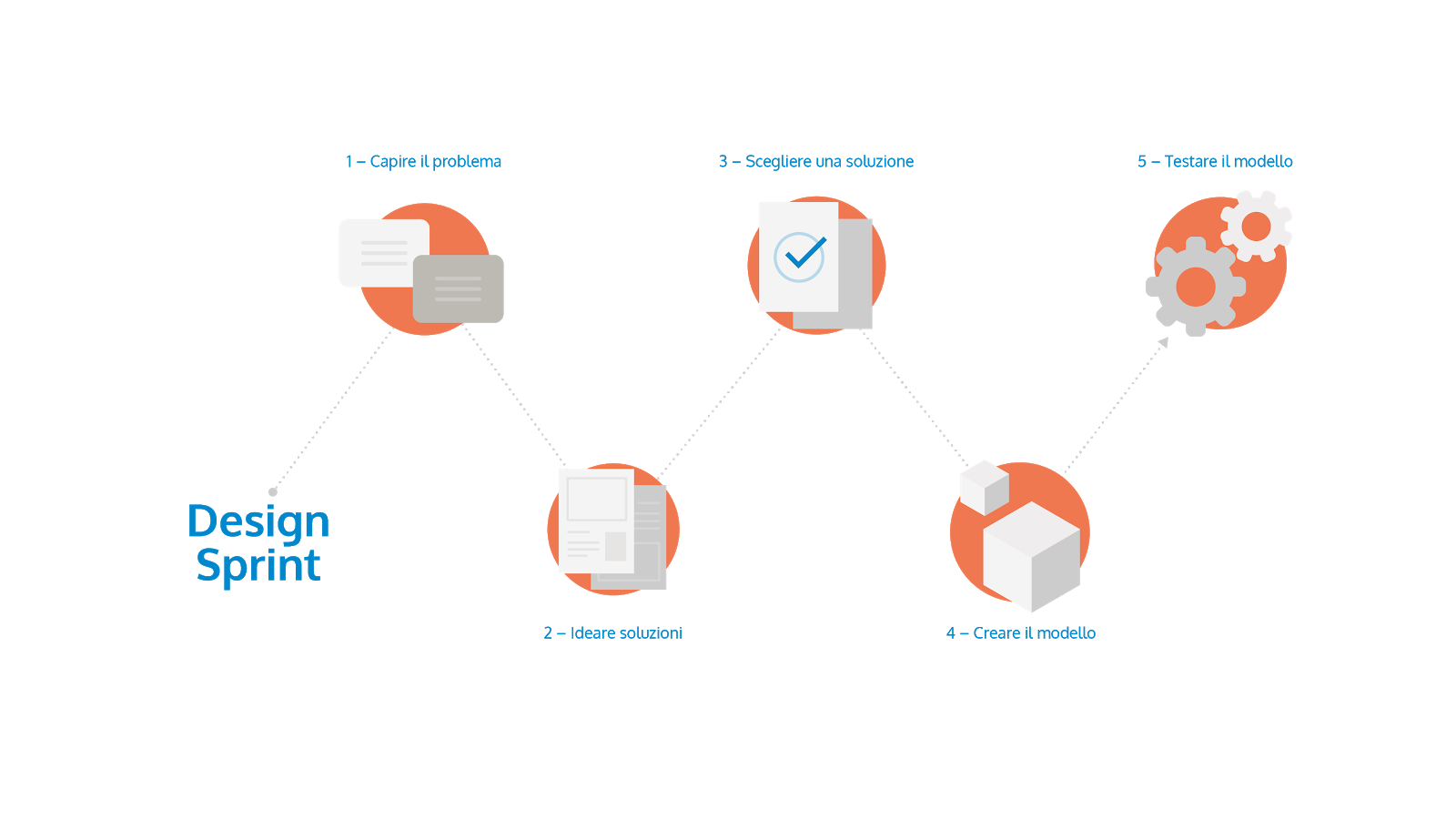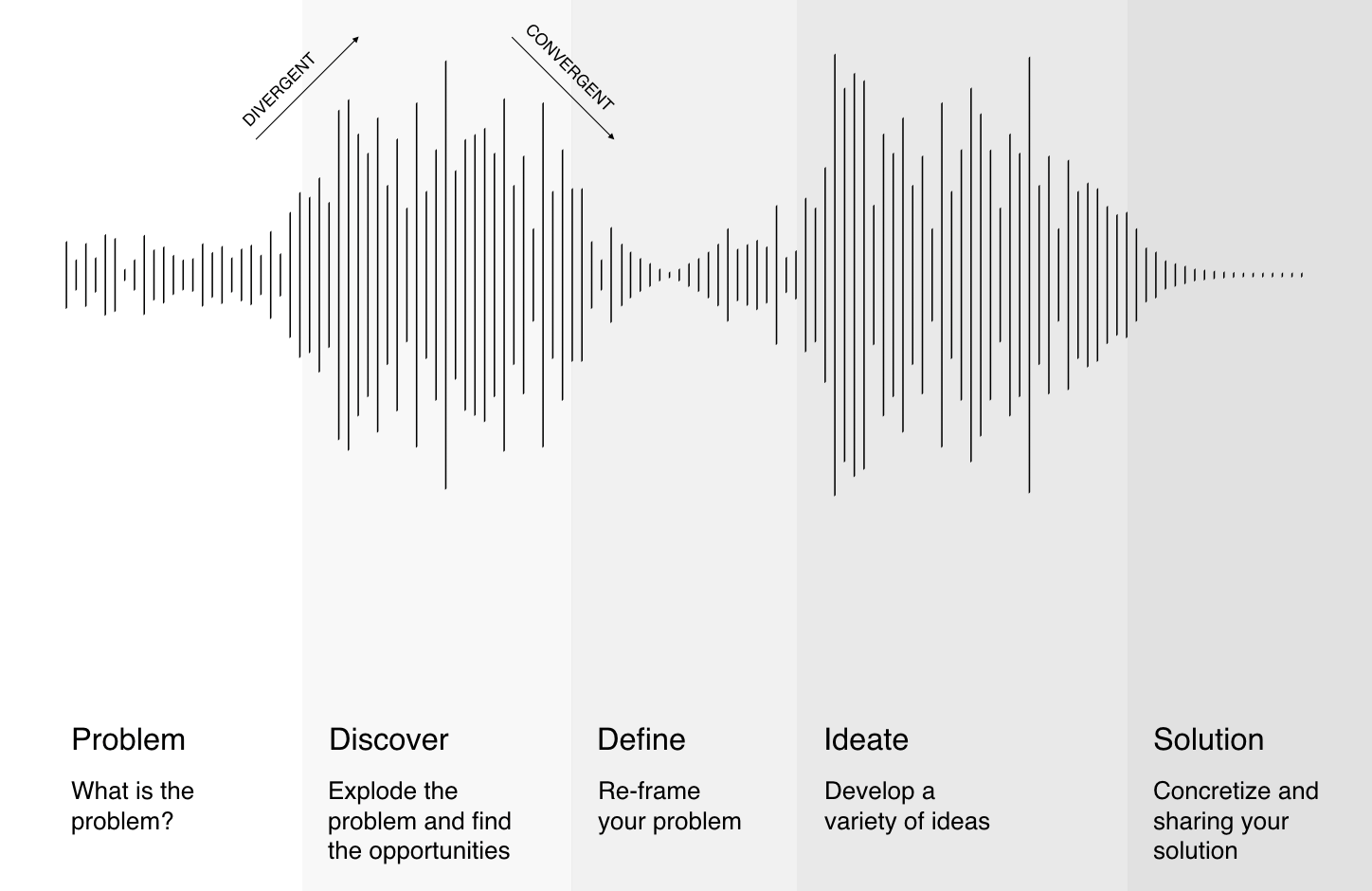An effective method for designing and prototyping innovative products or services and arriving quickly on the market with working solutions.
Real and effective innovation is the result of well-defined and tested tools and working methods.
An effective way to design and prototype products or services with a strong innovative character, and a route to get it quickly to the market in working order. Real and effective innovation is the result of well-designed, tested tools and good working methods.
It is unlikely for innovation to come from sudden intuition. It is often the result of well-designed, tested tools and good working methods.
In the majority of cases it is precisely taking on these tools that determine the success of an innovative idea. Without the use of which it would never happen and it would end up unknown, or not even used by anyone because it was not conceived.
Today, the Sprint design methodology, introduced by Google Ventures, represents an excellent tool to validate and create a really useful idea. But let’s start by making a point: first of all, when referring to ideas, we must not confuse innovation with creativity. They are two aspects linked to each other but there is an important distinction: creativity is focused on the generation of new ideas while the added value of innovation lies in its ability to test and “model” ideas, creating something useful with them.

So what is the Sprint design based on? Let’s sum it up briefly: the first step is to be clear about the problem. A Sprint confronts the team with a challenge focused on the realistic solution of the problem. Once clearly outlined, solutions must be found. You don’t start with a solution in hand, on the contrary. Sprint design was born with the idea of providing more efficient solutions. Then, you analyse all possible solutions and define what should be classified as “prototype”. Starting from the chosen solution, we go on to create a model – the prototype, precisely – of which we will then have to test its actual validity, i.e. whether the product (or service) really works.
But what are the advantages? First of all, reducing the decision making steps to shorten the working time considerably. In addition to this, being able to submit a prototype of the finished product to customers before it is even made will avoid costly investments. The purpose of Sprint design is precisely to minimize the risk associated with launching a product that does not exist in a market that also does not exist yet. Moreover, the structure of the Sprint is versatile and can adapt to every need, this includes the duration, which usually varies from 2 to 5 days.
New, often important projects require some alignment. Sometimes this need ends up with extensive documentation, long presentations, informative meetings and follow-up conversations. Sometimes the appropriate documentation is not provided at all and this can be unnerving to say the least…
With a Sprint process, things are decidedly different: all the elements useful for the success of the project are very clear from the beginning. Without too much time and effort, the team has a clear picture of the situation, takes advantage of shared research and acquires awareness and knowledge in the process. The Sprint process has all the necessary tools to correctly complete steps and coordinate all the planning activities. And that’s not all. Sprint is able to put together a diverse team of designers, developers and other professionals making the most of their contribution and improving speed, efficiency and concentration.
The process can be represented as a series of “diamond” shapes, whose course is first exploratory and then decision-making.

We can say that the classic double diamond shape has been taken up by us, because there is never a totally divergent phase and a convergent one, there is a continuous swing of emotions and thoughts, so we have redesigned the double diamond according to our vision of the process.
The information collected during the Sprint session is reordered and summarised in a report that describes a project proposal to meet the long-term goal.
Once the design proposal has been shared and approved, as already described, we proceed with the creation of the working prototype to give concrete form to what was defined in the previous phases.
At the end of the design, the product is developed with the technologies most suited and with Agile Scrum methodology, offering support for its implementation.
The difficulties encountered during a Sprint process only increase knowledge and experience in the resources involved. It allows participants to increase their skills in the technologies adopted and in possible solutions.
Let’s not forget that one of the strengths of Sprint design is also experimentation, extended to all the company’s resources. Employees get the right space to share the results of their personal experiments.
It is often the case that the client has the right idea and has it clear in his mind, a bit like a film running in front of his eyes, but to really make it happen you need the right tools. As we explained previously, innovation is not based on improvisation. So Uqido Deep Dive can be a great tool to turn an idea into a really useful product or service.
Uqido Deep Dive is a tool conceived and created by Uqido. Its foundation is in the principles of Design Thinking by adapting the best features of Design Sprint, outlined above to meet your needs. A deep immersion in the critical business issues are fragmented, dissected, analysed and hypothesised to reach really effective and viable solutions.
There are plenty of examples that illustrate the effectiveness of Uqido Deep Dive, in our internal projects and external projects. It was an excellent solution for Sport in Cloud that was looking for a better way to manage sports tournaments; it proved to be a valid support to the sales force for a company like Safilo and efficient in logistics for the Archiva app. In the least, this confirms that it is an effective way to design and prototype products with a strong innovative character.
